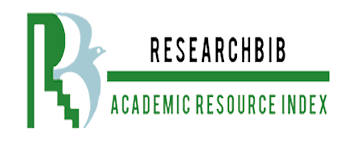Barreiras percebidas por alunos com e sem risco de suicídio para solicitar ajuda profissional
DOI:
https://doi.org/10.35622/j.rep.2022.01.006Palavras-chave:
acessibilidade, serviços de saúde, adolescentes, barreiras de acesso, risco de suicídioResumo
Os adolescentes correm alto risco de mortalidade por suicídio, mas o uso de serviços profissionais de saúde mental é muito baixo. O objetivo foi investigar as barreiras que percebem para solicitar ajuda profissional. Para isso, foi realizado um estudo observacional com abordagem mista em que o risco de suicídio foi avaliado por meio da escala de Plutchik. As barreiras percebidas foram investigadas com uma questão aberta que foi submetida a uma análise temática de código aberto. Participaram 403 alunos do ensino médio de Aguascalientes, cujo risco de suicídio era de 19%. Foram reconhecidas 14 barreiras diferentes, das quais predominou o tipo interno: medo e vergonha. Com maior risco de suicídio, as barreiras externas, como problemas familiares ou provocações, tornaram-se mais importantes. Ao contrastar com outros estudos, fica claro que a perspectiva qualitativa fornece uma melhor compreensão dos fenômenos subjetivos que fundamentam a prevenção do suicídio.
Estadísticas del Artículo
Referências
Aguirre, A., Cruz, S., Billings, J., Jimenez, M., & Rowe, S. (2020). What are the barriers, facilitators and interventions targeting help-seeking behaviours for common mental health problems in adolescents? A systematic review. BMC Psychiatry, 20(1), 293. https://doi.org/10.1186/s12888-020-02659-0
Arria, A. M., Winick, E. R., Garnier-Dykstra, L. M., Vincent, K. B., Caldeira, K. M., Wilcox, H. C., & O’Grady, K. E. (2011). Help Seeking and Mental Health Service Utilization Among College Students With a History of Suicide Ideation. Psychiatric Services, 62(12), 1510-1513. https://doi.org/10.1176/appi.ps.005562010
Balaguru, V., Sharma, J., & Waheed, W. (2013). Understanding the effectiveness of school‐based interventions to prevent suicide: a realist review. Child and Adolescent Mental Health, 18(3), 131-139. https://doi.org/10.1111/j.1475-3588.2012.00668.x
Barnes, L. S., Ikeda, R. M., & Kresnow, M. (2002). Help-Seeking Behavior Prior to Nearly Lethal Suicide Attempts. Suicide and Life-Threatening Behavior, 32, 68-75. https://doi.org/10.1521/suli.32.1.5.68.24217
Blanco, C., Okuda, M., Wright, C., Hasin, D. S., Grant, B. F., Liu, S.-M., & Olfson, M. (2008). Mental Health of College Students and Their Non–College-Attending Peers. Archives of General Psychiatry, 65(12), 1429. https://doi.org/10.1001/archpsyc.65.12.1429
Borges, G., García, J., & Borsani, L. (2016). Epidemiología de las conductas suicidas en México. En OPS (Ed.), Prevención de la conducta suicida (1.a ed., pp. 48-56). OPS.
Calear, A. L., Batterham, P. J., & Christensen, H. (2014). Predictors of help-seeking for suicidal ideation in the community: Risks and opportunities for public suicide prevention campaigns. Psychiatry Research, 219(3), 525-530. https://doi.org/10.1016/j.psychres.2014.06.027
NOM-047-SSA2-2015 Para la atención a la salud del Grupo Etario de 10 a 19 años de edad, (2019).
Chan, W. I., Batterham, P., Christensen, H., & Galletly, C. (2014). Suicide literacy, suicide stigma and help-seeking intentions in Australian medical students. Australasian Psychiatry, 22(2), 132-139. https://doi.org/10.1177/1039856214522528
Czyz, E. K., Horwitz, A. G., Eisenberg, D., Kramer, A., & King, C. A. (2013). Self-reported Barriers to Professional Help Seeking Among College Students at Elevated Risk for Suicide. Journal of American College Health, 61(7), 398-406. https://doi.org/10.1080/07448481.2013.820731
Downs, M. F., & Eisenberg, D. (2012). Help Seeking and Treatment Use Among Suicidal College Students. Journal of American College Health, 60(2), 104-114. https://doi.org/10.1080/07448481.2011.619611
Ebert, D. D., Mortier, P., Kaehlke, F., Bruffaerts, R., Baumeister, H., Auerbach, R. P., Alonso, J., Vilagut, G., Martínez, K. U., Lochner, C., Cuijpers, P., Kuechler, A., Green, J., Hasking, P., Lapsley, C., Sampson, N. A., & Kessler, R. C. (2019). Barriers of mental health treatment utilization among first‐year college students: First cross‐national results from the WHO World Mental Health International College Student Initiative. International Journal of Methods in Psychiatric Research, 28(2), e1782. https://doi.org/10.1002/mpr.1782
Eisenberg, D., Downs, M. F., Golberstein, E., & Zivin, K. (2009). Stigma and Help Seeking for Mental Health Among College Students. Medical Care Research and Review, 66(5), 522-541. https://doi.org/10.1177/1077558709335173
Eisenberg, D., Golberstein, E., & Gollust, S. E. (2007). Help-Seeking and Access to Mental Health Care in a University Student Population. Medical Care, 45(7), 594-601. https://doi.org/10.1097/MLR.0b013e31803bb4c1
Eisenberg, D., Hunt, J., Speer, N., & Zivin, K. (2011). Mental Health Service Utilization Among College Students in the United States. Journal of Nervous & Mental Disease, 199(5), 301-308. https://doi.org/10.1097/NMD.0b013e3182175123
Fox, M. L., James, T. G., & Barnett, S. L. (2020). Suicidal Behaviors and Help‐Seeking Attitudes Among Deaf and Hard‐of‐Hearing College Students. Suicide and Life-Threatening Behavior, 50(2), 387-396. https://doi.org/10.1111/sltb.12595
Garbus, P., Morales Osornio, A., & Cabello Álvarez, L. S. (2017). Accesibilidad a la atención en salud de adolescentes en San Juan del Río, Querétaro (México). Enseñanza e Investigación en Psicología, 22(3), 277-285.
Garduño, F., & Verde, J. (2015). La dimensión simbólica de la accesibilidad a la atención en salud de los adolescentes de San Juan del Río, Querétaro, México. Universidad Autónoma de Querétaro.
Han, B., Compton, W. M., Blanco, C., Colpe, L., Huang, L., & McKeon, R. (2018). National Trends in the Prevalence of Suicidal Ideation and Behavior Among Young Adults and Receipt of Mental Health Care Among Suicidal Young Adults. Journal of the American Academy of Child & Adolescent Psychiatry, 57(1), 20-27.e2. https://doi.org/10.1016/j.jaac.2017.10.013
Han, B., Compton, W. M., Eisenberg, D., Milazzo-Sayre, L., McKeon, R., & Hughes, A. (2016). Prevalence and Mental Health Treatment of Suicidal Ideation and Behavior Among College Students Aged 18–25 Years and Their Non–College-Attending Peers in the United States. The Journal of Clinical Psychiatry, 77(06), 815-824. https://doi.org/10.4088/JCP.15m09929
Han, J., Batterham, P. J., Calear, A. L., & Ma, J. (2018). Seeking professional help for suicidal ideation: A comparison between Chinese and Australian university students. Psychiatry Research, 270, 807-814. https://doi.org/10.1016/j.psychres.2018.10.080
Herrera, A., Páramo, D., & de Alba, D. (2015). Relación entre calidad de las relaciones intrafamiliares y riesgo de suicidio en estudiantes de Aguascalientes. VI Congreso Internacional de Prevención del Suicidio, 191-199.
Hunt, J., & Eisenberg, D. (2010). Mental Health Problems and Help-Seeking Behavior Among College Students. Journal of Adolescent Health, 46(1), 3-10. https://doi.org/10.1016/j.jadohealth.2009.08.008
Johns, M. M., Lowry, R., Andrzejewski, J., Barrios, L. C., Demissie, Z., McManus, T., Rasberry, C. N., Robin, L., & Underwood, J. M. (2019). Transgender Identity and Experiences of Violence Victimization, Substance Use, Suicide Risk, and Sexual Risk Behaviors Among High School Students — 19 States and Large Urban School Districts, 2017. MMWR. Morbidity and Mortality Weekly Report, 68(3), 67-71. https://doi.org/10.15585/mmwr.mm6803a3
Kim, E. J., Yu, J. H., & Kim, E. Y. (2020). Pathways linking mental health literacy to professional help‐seeking intentions in Korean college students. Journal of Psychiatric and Mental Health Nursing, 27(4), 393-405. https://doi.org/10.1111/jpm.12593
Kirkcaldy, B. D., Siefen, G. R., Urkin, J., & Merrick, J. (2006). Risk factors for suicidal behavior in adolescents. Minerva pediatrica, 58(5), 443-450.
Mortier, P., Auerbach, R. P., Alonso, J., Axinn, W. G., Cuijpers, P., Ebert, D. D., Green, J. G., Hwang, I., Kessler, R. C., Liu, H., Nock, M. K., Pinder-Amaker, S., Sampson, N. A., Zaslavsky, A. M., Abdulmalik, J., Aguilar-Gaxiola, S., Al-Hamzawi, A., Benjet, C., Demyttenaere, K., … Bruffaerts, R. (2018). Suicidal thoughts and behaviors among college students and same-aged peers: results from the World Health Organization World Mental Health Surveys. Social Psychiatry and Psychiatric Epidemiology, 53(3), 279-288. https://doi.org/10.1007/s00127-018-1481-6
Naghavi, M. (2019). Global, regional, and national burden of suicide mortality 1990 to 2016: systematic analysis for the Global Burden of Disease Study 2016. BMJ, l94. https://doi.org/10.1136/bmj.l94
Nam, S. K., Chu, H. J., Lee, M. K., Lee, J. H., Kim, N., & Lee, S. M. (2010). A Meta-analysis of Gender Differences in Attitudes Toward Seeking Professional Psychological Help. Journal of American College Health, 59(2), 110-116. https://doi.org/10.1080/07448481.2010.483714
Nock, M. K., Borges, G., Bromet, E. J., Cha, C. B., Kessler, R. C., & Lee, S. (2008). Suicide and Suicidal Behavior. Epidemiologic Reviews, 30(1), 133-154. https://doi.org/10.1093/epirev/mxn002
Oexle, N., Mayer, L., & Rüsch, N. (2020). Suizidstigma und Suizidprävention. Der Nervenarzt, 91(9), 779-784. https://doi.org/10.1007/s00115-020-00961-6
Pérez, B., Rivera, L., Atienzo, E., Castro, F., Leyva, A., & Chávez, R. (2010). Prevalencia y factores asociados a la ideación e intento suicida en adolescentes de educación media superior de la República Mexicana. Salud Pública de México, 52, 324-333. http://disde.minedu.gob.pe/handle/20.500.12799/1288
Picazo-Zappino, J. (2014). Suicide among children and adolescents: a review. Actas espanolas de psiquiatria, 42(3), 125-132.
Pisani, A. R., Wyman, P. A., Petrova, M., Schmeelk-Cone, K., Goldston, D. B., Xia, Y., & Gould, M. S. (2013). Emotion Regulation Difficulties, Youth–Adult Relationships, and Suicide Attempts Among High School Students in Underserved Communities. Journal of Youth and Adolescence, 42(6), 807-820. https://doi.org/10.1007/s10964-012-9884-2
Rodríguez, C., Lorenzo, O., & Herrera, L. (2005). Teoría y práctica del análisis de datos cualitativos. Proceso general y criterios de calidad. Revista Internacional de Ciencias Sociales y Humanidades, SOCIOTAM, XV(2), 133-154. https://www.redalyc.org/articulo.oa?id=65415209
Rudd, M. D., Joiner, T. E., & Rajab, M. H. (1995). Help negation after acute suicidal crisis. Journal of Consulting and Clinical Psychology, 63(3), 499-503. https://doi.org/10.1037/0022-006X.63.3.499
Ryan, G., & Rusell, B. (2000). Data management and analysis methods. En N. Denzing & I. Lincoln (Eds.), Handbook of qualitative research (2.a ed., pp. 769-802). SAGE.
Sagar, I., Godfrey, E., Graham, S., & Brown, J. S. L. (2020). Improving Mental Health Help-Seeking Behaviours for Male Students: A Framework for Developing a Complex Intervention. International Journal of Environmental Research and Public Health, 17(14), 4965. https://doi.org/10.3390/ijerph17144965
Suárez, Y., Palacio, J., Caballero, C., & Pineda, C. (2019). Adaptación, validez de constructo y confiabilidad de la escala de riesgo suicida Plutchik en adolescentes colombianos. Revista Latinoamericana de Psicología, 51(3). https://doi.org/10.14349/rlp.2019.v51.n3.1
Vörös, V., Fekete, S., Hewitt, A., & Osváth, P. (2005). [Suicidal behavior in adolescents--psychopathology and addictive comorbidity]. Neuropsychopharmacologia Hungarica : a Magyar Pszichofarmakologiai Egyesulet lapja = official journal of the Hungarian Association of Psychopharmacology, 7(2), 66-71.
Publicado
Edição
Seção
Licença
Copyright (c) 2022 Daniel Paramo, Ariel Herrera (Autor/a)

Este trabalho está licenciado sob uma licença Creative Commons Attribution 4.0 International License.
La Revista Estudios Psicológicos del Instituto Universitario de Innovación Ciencia y Tecnología Inudi Perú está sobre una licencia internacional Creative Commons Atribución 4.0. Lo que permite que los archivos sean de libre acceso y distribuidos libremente.
LOS AUTORES RETIENEN SUS DERECHOS:
- Los autores retienen sus derechos de marca y patente, y tambien sobre cualquier proceso o procedimiento descrito en el artículo.
- Los autores retienen el derecho de compartir, copiar, distribuir, ejecutar y comunicar públicamente el artículo publicado en la Revista Estudios Psicológicos (por ejemplo, colocarlo en un repositorio institucional o publicarlo en un libro), con un reconocimiento de su publicación inicial.
- Los autores retienen el derecho a hacer una posterior publicación de su trabajo, de utilizar el artículo o cualquier parte de aquel (por ejemplo: una compilación de sus trabajos, notas para conferencias, tesis, o para un libro), siempre que indiquen la fuente de publicación (autores del trabajo, revista, volumen, número y fecha).



















